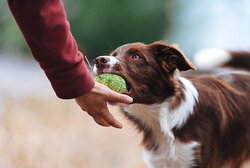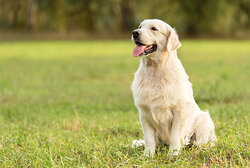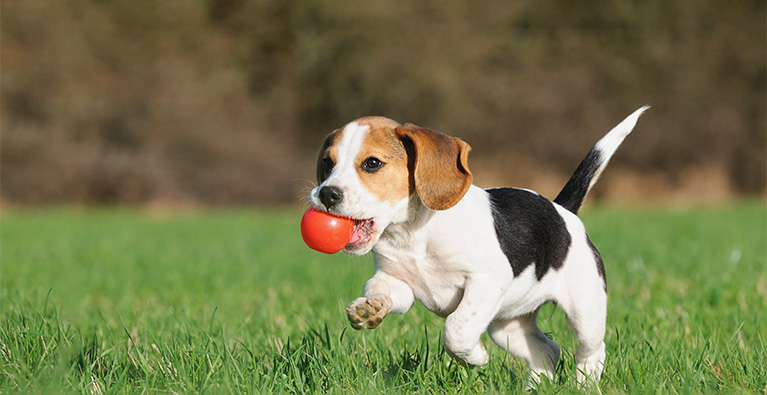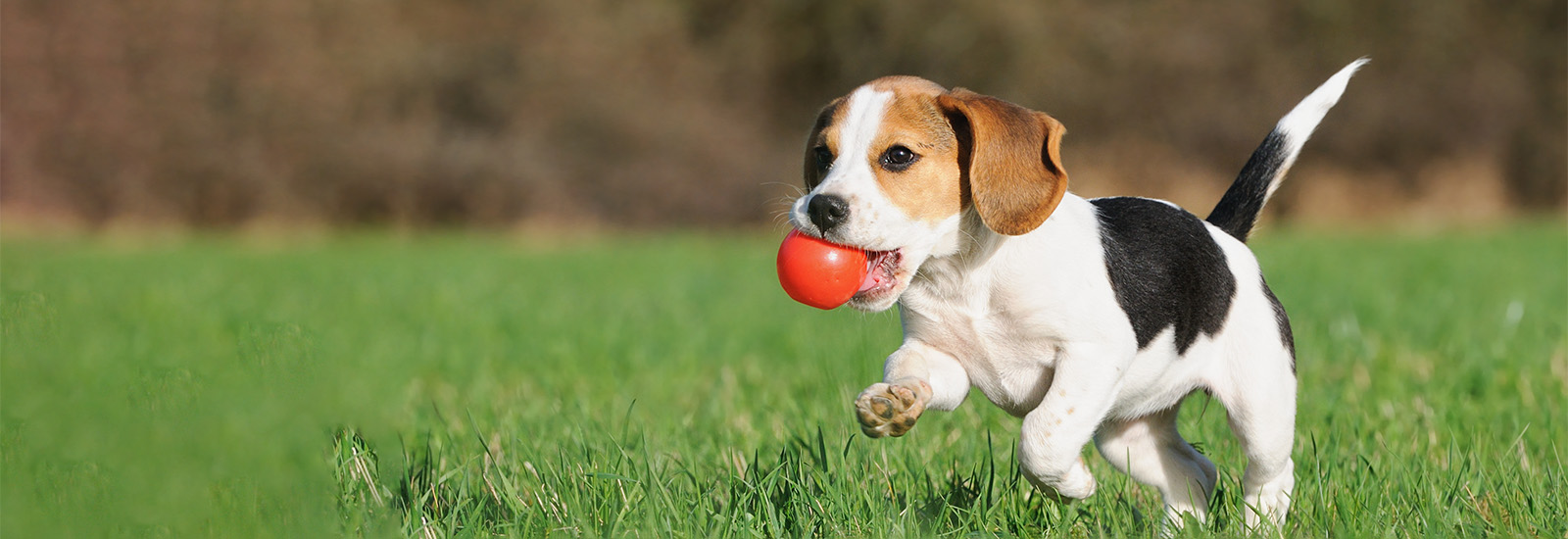Teaching your dog to fetch
Fetching is an ideal activity for dogs. In contrast to when you throw a stick, there are a few rules that you should follow. These ensure that there is a real collaboration between the dog and its owner.
Fetching is not just throwing sticks
Some dog owners occasionally throw a stick and are delighted when the dog brings it back. But it is just as likely that their dog will disappear with the stick, simply leave it on the ground, or refuse to give it back when it returns. However, this is not the case with “real” fetching. Here there are clear rules, which may come as a surprise at first – especially for your dog. But if you train your dog and keep at it, you will experience a lot of positive results. You will have a trusty companion at your side who has learned not to run after every moving object.
Training your puppy to fetch
Some puppies show an early interest in carrying all sorts of things around in their mouths. Dogs need to be kept occupied, so it is advisable to practise fetching with them in a fun way. However, do not forget that puppies still have a very short span of attention and there is no point in forcing them to do anything. This could result in them losing their desire to fetch things. You can start by praising your pet for carrying or fetching an object and giving it a reward. If this happens to be one of your favourite slippers, it is advisable to take it off your puppy without saying a word. Scolding could ruin the whole learning process. If, however, your pet fetches something that is allowed, then give it a lot of praise and offer it a treat in exchange for its “prey”.
Encouraging dogs to fetch
Not every dog will show interest in fetching things. Sometimes pets simply do not feel like it and would rather do something else with their owner. But it could just as well be that the dog needs sufficient motivation first. You are an important factor here, because with some dogs you have to put in a great deal of effort. Make the object interesting for your four-legged friend. Hide it behind your back, wave it back and forth in front of your pet and try to use words to get it interested in it. If this does not work, then buy a so-called prey dummy. This is a little pouch in which you can hide treats. As soon as the dog smells it, the prey dummy will become far more exciting than a stick or a toy.
How can I teach my dog to fetch?
- Fill a prey dummy with treats
The easiest way for a dog to learn to retrieve things is by using a prey dummy filled with great-smelling treats. You can buy one at any pet shop or online. Fill the pouch with your dog’s favourite snacks. As a result, your dog will probably become extremely interested in the prey dummy. -
Choose the right time and place
If you want to try training your dog without a prey dummy, then it is even more important to pick the right time and place. Your pet should have already had the chance to loosen up and let off some steam. It is also an advantage if your dog has only had a small amount to eat and is therefore particularly interested in being rewarded with treats for a specific behaviour. Also, bear in mind that the presence of other dogs and people may interfere with its concentration. The fewer distractions there are, the more successful the first steps in fetching will be. - Get your dog interested in the object
Most dogs love treats. A dog can therefore become particularly interested in an object if it not only smells good, but also has a tasty reward hidden inside. The dog will receive this if it demonstrates good retrieving skills at each stage. First of all, however, it is only important that the four-legged friend picks up the object. As soon as it gives it back, it will either immediately get a treat that has been concealed within it or it will be given a reward from another bag of goodies in exchange for it.
- Bringing back the object obediently
When you are training your dog to fetch, you should not throw the object too far away; one or two metres will suffice. In this way you are better able to maintain contact with your dog and call it back right away. If this does not work, put your pet on a lead. Although you should obviously avoid yanking on the lead if your dog tries to run away, it is an effective tool to prevent it from disappearing. Lure your pet back to you and give it a reward.
- Only when you give the command should your dog start running.
One of the biggest differences to when you normally throw an object is that the dog is not allowed to immediately, or even prematurely, rush off, but has to wait obediently by your side. Here, as well, a lead can be a great advantage at first. It is also important that the dog already knows the commands “Sit!” and “Stay!”. This is what this first step is all about. Get your pet to follow these commands and make sure that you have its full attention. Casually throw the object away and make sure that your dog keeps observing the command “Stay!”. This is an important exercise for what is known as steadiness. This describes the dog’s ability to not run off simply because it sees something moving. The dog should understand that this behaviour will only be tolerated if it has been given the command to do so. This is usually “Fetch!”. Only then should you allow your pet to retrieve the object. -
Handing over the prey dummy
When a dog has learned to wait obediently, to pick up the prey dummy or another object and to bring it back, three decisive milestones have already been reached. At first, the dog should be praised for each of these activities and, depending on its progress, always be given a reward. Ultimately, however, a reward should only be given if the dog obediently places the object in front of its owner or even drops it into their open hand. This completes the process and you can start again from the beginning. It is a great feeling when you see this slowly but surely functioning with increasing success. It provides you with a perfect way to keep your dog occupied both mentally and physically. -
Increasing the level of difficulty
There are several ways to increase the level of difficulty when training your dog to fetch: You can throw the object further and further away, increase the amount of time the dog has to remain still (steadiness), or practice retrieving objects in tall grass. Here, it is no longer a visual search and the dog has to use its sense of smell. If you want to go one step further, you can use a second prey dummy and get your pet to fetch first one and then the other. Or does your dog have lots of toys scattered around your home? With a little practice, you can get it to gather them all up in the evening. This will save you work and keep your pet occupied at the same time.
Video about the command “Fetch!”
Would you like to see the use of the command “Fetch!” on video? Animal trainer Fränzi Lüttich demonstrates how it works with dachshund Polly:
You may also like this

Teaching your dog the commando "Down"
“Down!” is one of the most important commands a dog should master

Teaching a dog the command “Drop it”
The command "Drop it" is very important

Teaching your dog to sit
How to teach your dog to sit

Teaching your dog the command "Stay"
How to practice the command "Stay" with your dog





